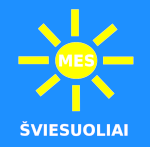Siūlysiu pranešimą skaityti konferencijoje apie šv.Tomą Akvinietį.
Mulla Sadara: One result of this Existentialism is "The unity of the intellect and the intelligible" (Arabic: Ittihad al-Aaqil wa l-Maqul. As Henry Corbin describes:
All the levels of the modes of being and perception are governed by the same law of unity, which at the level of the intelligible world is the unity of intellection, of the intelligizing subject, and of the Form intelligized — the same unity as that of love, lover and beloved. Within this perspective we can perceive what Sadra meant by the unitive union of the human soul, in the supreme awareness of its acts of knowledge, with the active Intelligence which is the Holy Spirit. It is never a question of an arithmetical unity, but of an intelligible unity permitting the reciprocity which allows us to understand that, in the soul which it metamorphoses, the Form—or Idea—intelligized by the active Intelligence is a Form which intelligizes itself, and that as a result the active Intelligence or Holy Spirit intelligizes itself in the soul's act of intellection. Reciprocally, the soul, as a Form intelligizing itself, intelligizes itself as a Form intelligized by the active Intelligence.
http://tehran.miu.ac.ir/uploads/Vesselinov_metaphysics_of_Resurrection_126994.pdf
Without any exaggeration we can s ay that Mulla Sadra’s meta physics of Resurrection r eturns 'creat ures ' to their primordial nature ( fitra ) , in accordance with tradition ( hadith ): ' My Lord, show me things as they are'. It is in this, as is the great charm and importance that this metaphysi cs can have on us, people nowadays, because, as we found , it regains all 'works' without exception to their simultaneity in Being’s primordial Unity, where : All is All, from All to All by All.
Following the principle of analogy, Mulla Sadr speaks of three basic types of human being: natural man (insan tabii),mental man ( insan nafsani ) person and spiritual person ( insan akli or insan ruhani ) . 24 To e very type of person corresponds similarly ascending state and similar body. This principle of analogy is valid also in the ontological level. Corbin points out that such a Suhra w ardi Mulla Sadr a also structures universe in three worlds that can be perceived by the active imagination, which is a organ of true perception and cognition. 25 These three worlds are traditionally marked in the Islamic spiritual tradition as a world of substantial matter ( mulk ) , the world of the bodies in the spiritual state ( malakut ) an d the world of pure cherubic intelligences ( jabarut ). “ Worlds are similar and parallel. ” 26 In application of the principle of analogy and co rrespondence we see that Mulla Sadr a cling s to the universal thesis of interrelation of All with All. The ideal topos of this interdependence is the heavenly Adam, in whom all opposition s meet and reconcile. ” The more man abstracts himself and become s essential and gets more powerful and perfect, he covers more things and collect s more complete ly opposites. It goes throu gh levels of sophistication in perfectness , till he realize s in his soul, i. e. in his essen ce the structure of all E xistence. Then h e bec o me s - as Sheikh (Ibn Sin) mentioned in “Ilahiyat” of Ash - Shifa - a reasonable world that is parallel to the entire se nsory world , and observer of Him W ho is the absolute Kindness , absolute G ood and absolute B eauty. The soul is united with Him and it is sealed by His model .”
"Knowledge in Later Islamic Philosophy: Mulla Sadra on Existence, Intellect ..." by Ibrahim Kalin https://books.google.lt/books?id=GoJ2CAAAQBAJ&pg=PT24&lpg=PT24&dq=Mulla+Sadra+trinity&source=bl&ots=_WeKj2onO-&sig=xOdvfvtGzWOMIFT3AhxfW0-kpmE&hl=en&sa=X&redir_esc=y#v=onepage&q=Mulla%20Sadra%20trinity&f=false
TomasAkvinietis
Recent Changes
网站
Įvadas #E9F5FC
Klausimai #FFFFC0
Teiginiai #FFFFFF
Kitų mintys #EFCFE1
Dievas man #FFECC0
Iš ankščiau #CCFFCC
Mieli skaitytojai, visa mano kūryba ir kartu visi šie puslapiai yra visuomenės turtas, kuriuo visi kviečiami laisvai naudotis, dalintis, visaip perkurti. - Andrius
